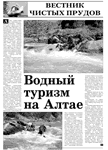|
Epigraph
It was April 1987, and I had just joined the central staff of the USSR KGB. My initiation into my new workplace was less than auspicious. Within half an hour of hastily laying on some snacks and treats to mark my arrival, I received this pearl of wisdom from one of the old hands:
"You know what it takes to be a real operator? An analytical mind, working with open sources and undercover agents - you need all that, of course. But when you can gauge the thickness of a pile of papers at one glance and cut exactly the right length of string to stitch up the file at the first go - now that's when you can say you've made the grade."
Civilian offices were already using the first personal computers for their paperwork, and the Buran shuttle was preparing to blast off from Baykonur. But here they were clinging to a bygone era of purple ink, needles for stitching up folders, and a pocketful of 2-kopeck coins for payphones. The era defined the mentality. They liked to stitch their cases up.
Chapter 1
How the Yukos affair began
Until now, one could only judge the Aleksey Pichugin case from scanty or deliberately false information. This was fed to the public through the state TV propaganda machine by the Procuracy General and the top Kremlin officials handling the Yukos affair. Journalists simply drew on material from colleagues - meaning de facto from the prosecution - as they painted their outline of the trial.
The glaring inconsistencies in the evidence, the way it was stitched together amid contrived secrecy, elicited no particular objection. Not even the press had much to say about the open fabrication of evidence or the dismissal of the first jury. And the papers still have much leeway to cover matters off-limit to the electronic media and television.
I could, of course, rebuke timid editors and uninquisitive reporters. I could, that is, if I were writing in a country whose judiciary can stand on its own two feet. But in a land where the courts are not independent, standards quickly descend until they blur with political expediency and official criminality.
Having started out as an important element in a campaign of intimidation, the Pichugin case, together with the other "active measures" against Yukos, was intended to be the initial and crushing strike in the blitzkrieg to seize the business and remove its proprietors from the scene.
To understand why the Pichugin case was needed, and indeed why the Yukos case was, we need to go back to early 2003. A time when even Russia's boldest newspapers and most prescient commentators failed to divine the political and economic cataclysm being plotted by the president and his closest associates.
The origin of these cases lies not, of course, in the abduction of a pair of provincial business folk from Tambov. Nor, even more so, in hooligan pyrotechnics outside the home of the parents of an awkward Yukos employee (of which more later). The Procuracy General and security services would never jump into a murder probe, even a particularly bestial one, with such alacrity as they did on 27 May 2003, after Pichugin's first questioning. To do that, they needed orders from the very top.
Начало | << | 1 | 2 | 3 | 4 | 5 | 6 | 7 | 8 | 9 | 10 | 11 | 12 | 13 | 14 | 15 | 16 | 17 | 18 | 19 | 20 | 21 | 22 | 23 | 24 | 25 | 26 | 27 | 28 | 29 | 30 | 31 | 32 | 33 | 34 | 35 | 36 | 37 | 38 | 39 | 40 | 41 | 42 | 43 | 44 | 45 | 46 | 47 | 48 | 49 | 50 | 51 | 52 | 53 | 54 | 55 | 56 | 57 | 58 | 59 | 60 | 61 | 62 | 63 | 64 | 65 | 66 | 67 | 68 | 69 | 70 | 71 | 72 | 73 | 74 | 75 | 76 | 77 | 78 | 79 | 80 | 81 | 82 | 83 | 84 | 85 | 86 | 87 | 88 | 89 | 90 | 91 | 92 | 93 | 94 | 95 | 96 | 97 | 98 | 99 | 100 | 101 | 102 | 103 | >>
| 










